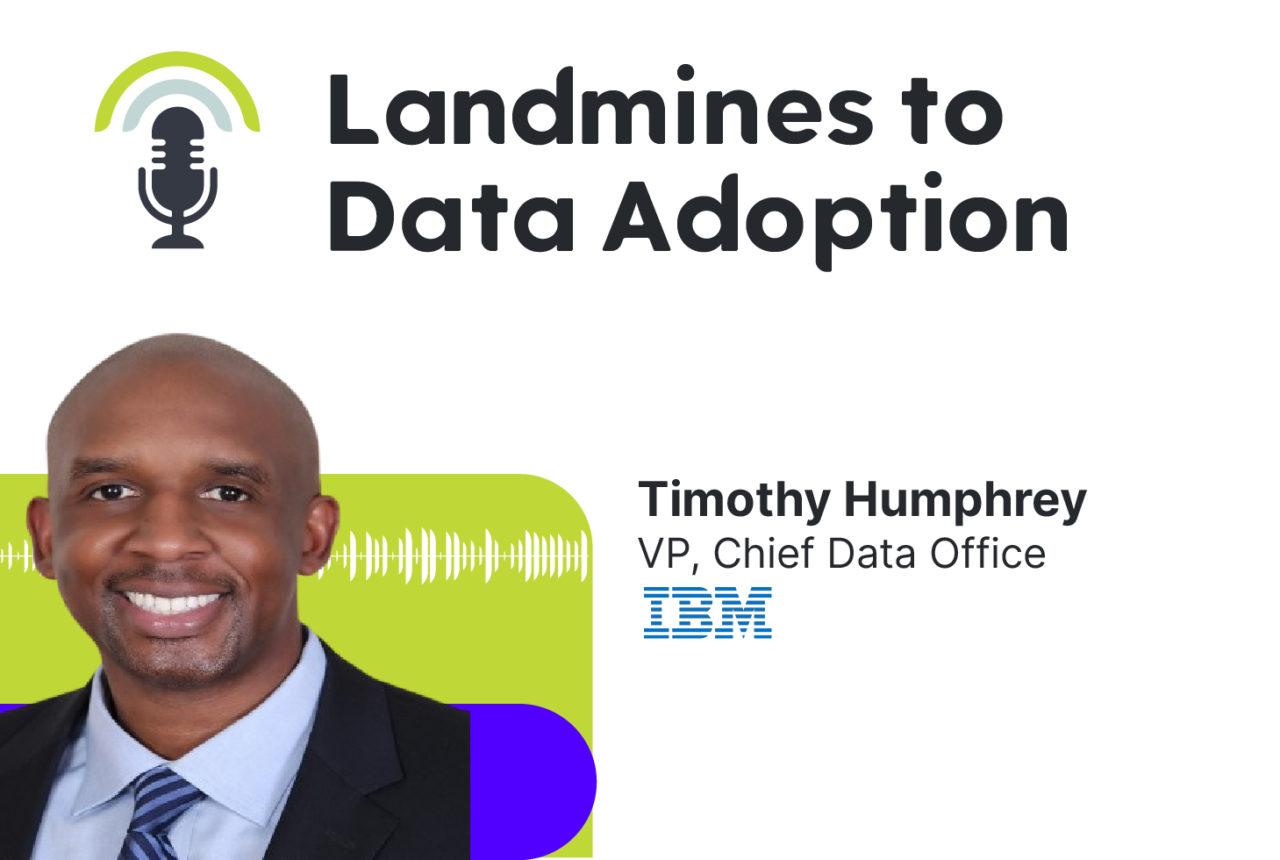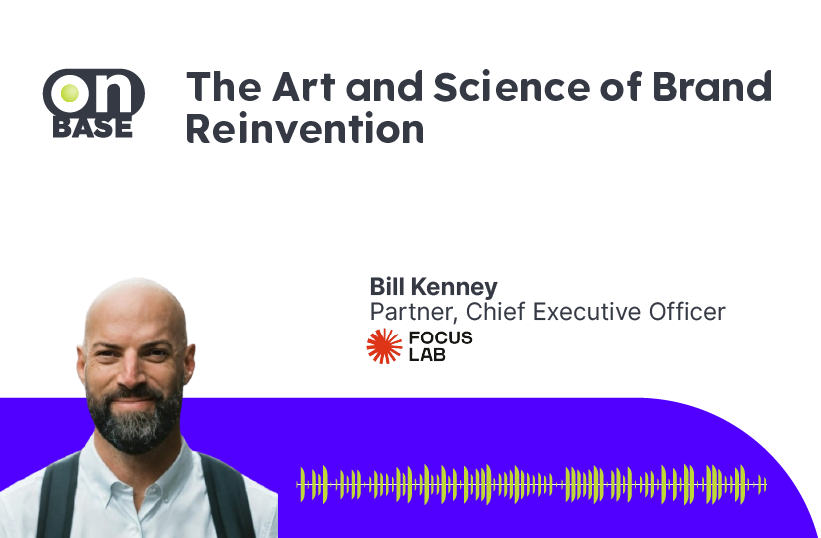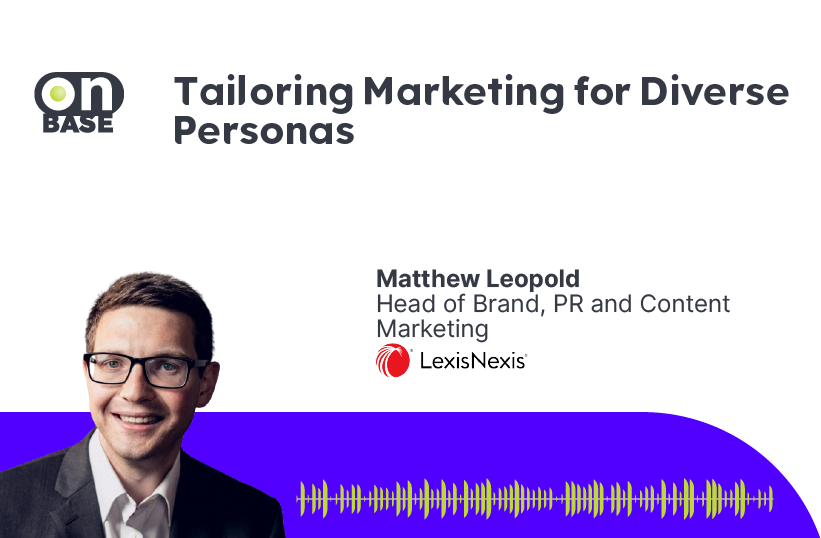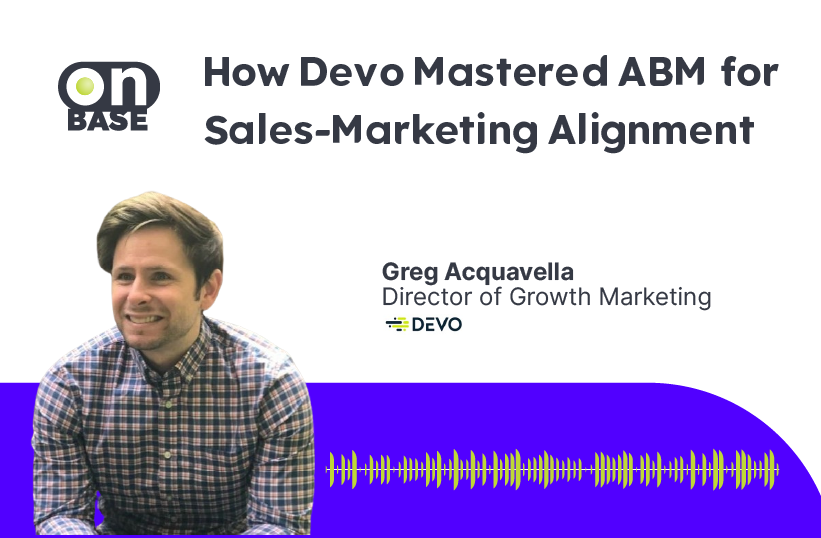Shownotes
In this episode, Timothy Humphrey talks about driving data adoption. He breaks down what a data platform and data services are, how to help your customers adopt your data platforms and services, the top “land mines to data adoption” you should be aware of, and more.
About the Guest
Timothy Humphrey is currently Vice President, IBM Chief Data Office, with a mission to deliver a trusted, enterprise-wide data and AI platform for transforming IBM. He is also the Senior State Executive for IBM in North Carolina and Senior Location Executive for IBM in Research Triangle Park, NC. He serves as a board member for many local non-profit organizations. Tim is also a very active mentor to over 30 global professionals, students, and youth.
Key takeaways
- A data platform centralizes your data so that you can use data services (or tools) to analyze, model, etc.
- When scaling from 10k to 100k users, Timothy focused on the groups trying to do major business transformations and figured out how he could help. Then, he had to focus on the enterprise-level initiatives and what was on the mind of the c-suite executives.
- Any type of big effort that causes people to change what they do, Timothy calls “land mines to adoption”. To avoid or overcome these land mines, they must use all the tools in their toolbox.
- Timothy’s top three major land mines on the journey to data adoption are: not invented here, having multiple versions of the truth, and overselling the value of a project.
Quotes
“If we can attract people into STEM jobs and into STEM careers, then they have a path to generational wealth, and they change the cycle of poverty, and we can improve society.”
Highlights from the episode
What is a data platform? What are data services?
A data platform centralizes your data. When we layer services on top of that, we differentiate from a data lake to a data platform. Whether you’re doing modeling or analysis, you can do it all right on our platform with our tools (which we call services).
How do you help people adopt your data platform and services?
Everyone has their own strategies, so it can be complex and challenging. I’m always focused on what we’ve learned from these challenges. Any type of big effort that causes people to change what they do, I call “land mines to adoption”. I tend to stay away from those. If I hit one, I quickly go into a bag of tricks to remediate and keep it moving forward.
In our first year of the adoption journey, we had hundreds of users, primarily data scientists that were working on a particular business problem. Early adopters are easy. As long as you’re attentive, agile, a good listener, and understand their problems, you’ve got them. In the following few years, we scaled exponentially. From 10,000 to 100,000 users was the hardest. We focused on the groups that are trying to do major business transformations and figure out how we can help. Then, we had to focus on the enterprise-level initiatives, what’s on the mind of the c-suite executives.
How do you drive the 10k to 100k adoption?
We use all the tools in the toolbox. Office hours, showcasing team accomplishments, listening and feedback sessions, getting our information into town hall meetings, infusing our messaging into the messaging of the CEOs, etc. Word of mouth is especially powerful.
What are the top “landmines” we should be aware of?
The top three major land mines on the journey to data adoption are: not invented here, having multiple versions of the truth, and overselling the value of a project. To avoid having multiple versions of the truth, sit with the senior leader of that function and understand their management system and their KPIs. Then, ask them how they go about getting the information they need to do their job. Notice their reactions to the data and how they work with their team. That knowledge is key.
Do you have any resources you recommend to the audience?
Our Iceberg Is Melting by John Kotter
Shout-outs
Derrick Ware – CTO at Newsela
Seth Dobrin – Chief AI Officer at IBM
Anshul Sheopuri – VP and Chief Data & Technology Officer at IBM HR

Sunny Side Up
B2B podcast for, Smarter GTM™




